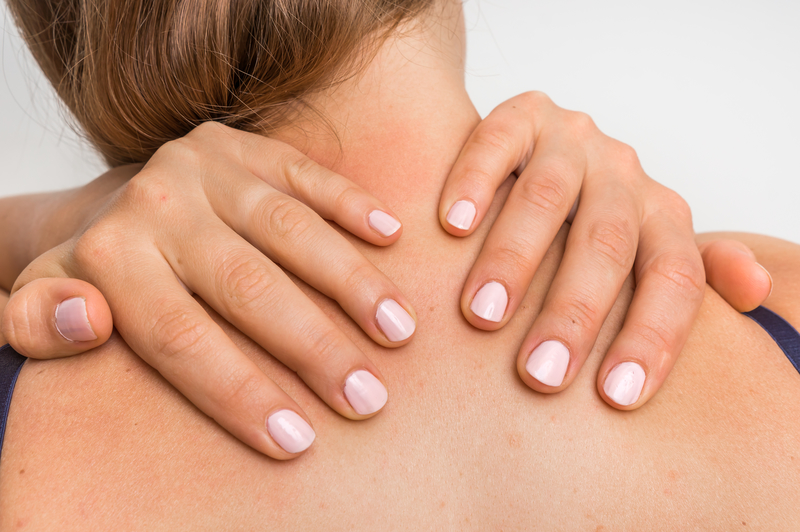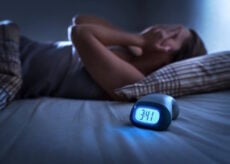The Benefits of Self-Massage + Our Favorite Techniques

When you think about a massage, you probably picture a nice salon with the scent of eucalyptus wafting from a diffuser, dimmed lights, and some soft, deeply relaxing music playing in the background. You may also be thinking about the expense as massages can run anywhere from $50 to $100 for a fleeting, though highly beneficial, hour. As soothing as the spa-like atmosphere is, it doesn’t have to be the only way to indulge in this healthy activity. But, are there health benefits of self-massage? You bet!
Did you know that not only can you give yourself a massage and release your own trigger points, but it’s extremely healthy for you as well? And, while you’re at it, you can save that hard-earned cash for something truly fun and relaxing or at least tide yourself over before your next massage!
What are the benefits of self-massage, and how can you get started? It may not sound like something you’d normally do at home or even be able to do for yourself, but it turns out that self-massage really is a thing that’s good for you and easy to do!
What Are the Benefits of Self-Massage?
- Increase your circulation—massage can definitely help get the blood flowing and promote healing.
- Cost—don’t forget about the massive savings you can reap by learning to massage yourself!
- Relieve tension—massaging your temples can assist in reducing headaches and can even lessen the pain of migraines.
- Relieve sinus pressure—gently applying pressure in just the right spots can help alleviate some of the pressure you may feel in your sinus cavities.
- Relieve depression—creating a healthy mind-body connection can help lessen the effects of depression.
- Cut cravings—one study looked at people with cigarette cravings and found that self-massaged helped improve moods, lower anxiety, and reduce withdrawal systems.
- Effective—you may not believe it, but self-massage can be even more effective than going to a professional massage therapist! After all, you know what hurts and where!
- Connecting with yourself—developing a mind-body connection is essential for good health.
- Save Time—in this day and age when no one has any extra time, using that precious time to make an appointment and get to the massage therapist may be the last thing on your agenda. Thanks to self-massage, you can still benefit in the privacy of your own home at your own convenience.
Top Tricks for Effective Self-Massage
You aren’t a professional, so how do you know how to start a self-massage? Well, here are a few tricks to try right now to start building your self-massage skills.
Where—start on your lower extremities and work your way upward and toward your heart. You know where things hurt, so you can easily focus on sore areas and trigger points until they release.
How—Using circular motions, gently work your way from the outer extremities inward and upward. Use strong pressure but not too strong—you don’t want to cause yourself additional pain.
Tools—which tools can you use to massage yourself? Try rolling on a therapy ball or two, foam roller, or even a well-used tennis ball (so it has some give). Or try using a trigger point tool or a muscle roller stick. And don’t forget your hands and elbows—they’ll often do the trick.
Oils—scented massage oils, coconut oil, and even olive oil can help make the massage more comfortable.
Is It Ever Not a Good Idea to do Self-Massage?
There may be instances when a self-massage is actually not recommended. As crazy as it sounds, it’s true. In the following situations, self-massage should most likely been avoided:
- Injuries can require healing time, and self-massage may interrupt this process. Try ice and heat instead.
- The trigger point does not release with repeated self-massage. There may be bigger issues at hand.
- There could be referred pain, meaning the true pain is not coming from the spot you are massaging.
In these cases, consulting a professional (e.g., your physician or physical therapist) is a good idea as you want to get to the root of the pain and resolve the injury before attempting self-massage.
Try These Self-Massage Techniques
Now that you know the benefits of self-massage, you’re probably eager to get started yourself. Try some of these techniques to get started:
- The Morning Wake-Up—first thing in the morning, gently punch your body from head to toe. This can help wake up sleepy muscles and get them fired up and ready for the day. You can also try this technique before bed to relieve tension and stress that has accumulated throughout the day and promote a good night’s sleep.
- Neck rub—place your left hand on your neck. Gently squeeze your fingers and thumb together while turning your head to the right and pulling gently on your neck muscles as you turn. Repeat on the opposite side.
- Head massage—when you’re suffering from a headache, gently rubbing between your ears and your cheekbones can work wonders. Use a light circular motion and remember to breathe.
- Shoulder rub—begin by shrugging your shoulders so you can determine where your trapezius muscles are. The muscles that elevate are the ones you’ll focus on. Grasp this muscle on your left side with your right hand. Take your four fingers and gently knead them into the muscle. Continue for 3 minutes and then repeat on the opposite side.
- Foot rub—using your thumbs, place them on one heel, and with a steady pressure, work your way up the center of your foot to the balls of your feet. Next, take each toe and gently pull and knead it for 10 – 15 seconds. Last, grasp both sides of your foot in your hand and gently squeeze it together as you work your way up and down the entire length of your foot.
- Face massage—begin by pinching your jawline, starting from your chin to your earlobes. Next, apply gentle pressure underneath your cheekbones starting at your nose and working your way back toward your hairline. Last, beginning at the center of your forehead using your fingers, work your way up and out in gentle circles.
- Back massage—this is a great time to employ a therapy ball. While standing, place the ball between your back and a wall (avoiding the spine area). Gently move your body up and down by bending your knees. Focus on sore areas a little more and hold the ball in place until the trigger points release.
The Benefits of Self-Massage: A Recap
If you haven’t already, go ahead and turn on some relaxing music, grab some massage oil, and prepare to relax as you enjoy the benefits of self-massage. You may not be able to replace your favorite massage therapist, but you can enjoy some immediate relief and relaxation any time, right in the privacy of your own home!






